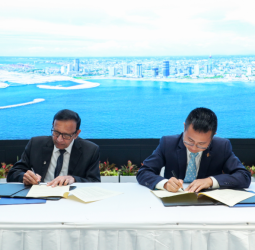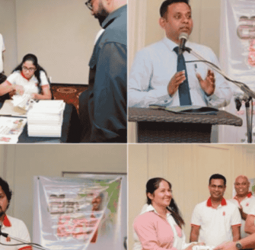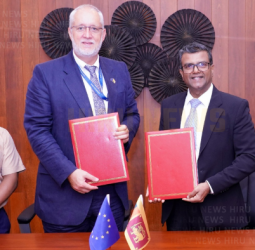By Dr. Roshan Rajadurai, Media Spokesperson of the Planters’ Association of Ceylon
'Tyranny is the deliberate removal of nuance' - Albert Maysles
Few sectors are as emotionally and politically charged as the Sri Lankan plantation industry. Media often portrays the “estate sector” as the single-most impoverished, malnourished, and lacking in basic amenities, often holding RPCs accountable for the entirety of this tragic situation. Given that RPCs only account for 15% of the plantation sector workforce out of the total population of 1 million, this is naturally a deeply flawed assumption.
Yet for reasons that are mostly political, when the welfare of “estate sector workers” and the “estate population” are discussed, they are almost entirely focused on issues relating to the Malaiyaha Tamils employed by RPCs in the Nuwara Eliya district alone. This despite the fact that plantation sector workers are found in 12 districts across Sri Lanka,
To ensure real and lasting progress, we require a significantly more informed, nuanced national debate that is grounded in reality.
Confusing the exception with the rule: what exactly is the “estate community”?
The technical definition of ‘estate sector’ in the Sri Lankan context refers to all plantations that are more than 20 acres in extent with 10 or more resident workers. This is a much broader categorization than the RPC sector estate communities. Yet the terms are typically used interchangeably, creating a massive distortion in perceptions vs reality.
Hence, even as incidence of poverty in the “estate sector” is at 50%, incidence of poverty among RPC workers is significantly better, while several other critical metrics including Infant Mortality Rates (IMR), Maternal Mortality Rates (MMR), have recorded massive improvements since the start of privatization in 1992, right through to the present day.
Similarly, RPC workers account for just 15% of the estate sector workforce across tea, rubber, and other crops. Yet when the media and political cycles focuses on the well-being of “estate workers” they focus exclusively on RPC workers from the Malaiyaha Tamil community working in the tea industry.
This despite the fact that “estate sector workers” are actually distributed across the entire island, and across industries spanning tea, rubber, coconut, spices, and fruits. Worse still, these discussions totally exclude the many hundreds of thousands of other workers and their families who make up the vast majority of this community, and yet receive little to no attention.
This discrepancy was best highlighted by the plight of estate-sector workers in the Monaragala district where employees of state-owned rubber plantations are not provided with work, reasonable pay, EPF/ETF, or any of the other extensive support in terms of housing, nutrition and other essential public services. Crucially for these workers, they have no Trade Unions or political parties discussing their plight despite them actually being among the most margainalised communities in the estate sector.
By conflating the incidence of poverty, malnourishment and other socioeconomic inequalities in these non-RPC estates with the RPC sector, where significant support is still being provided ignores both the scope of improvements made under RPC management, and the massive gap in public services in non-RPC sectors, and is a disservice to both communities.
Developments in housing, infrastructure and child care in the RPC sector
Post-privatization, significant strides have been made to improve housing and infrastructure for RPC workers. This progress is the result of a collaborative effort involving various stakeholders, including Regional Plantation Companies (RPCs) and the Plantations Human Development Trust (PHDT).
The PHDT - a tripartite body comprising government, trade union, and RPC representatives - is at the forefront of improving the quality of life for plantation workers. Since privatization in 1992, the PHDT, with strong support from RPCs, has significantly reduced the number of RPC workers living in line rooms.
Currently there are only 110,000 workers who contribute their labour to the Plantation Industry out of one million resident plantation population in RPCs. By 2022, a total of 65,000 new housing units had been provided for the community.
These modern homes include attached bathrooms with each valued at approximately Rs. 1.2 million prior to the economic crisis. At the time of construction, each 550 square-foot property was of equal or greater value than 4 years of gross salary, and was constructed on 7 perches of land provided completely free of charge by the estate.
Meanwhile, a further 116,000 residences have been upgraded, while 134,000 individual toilets were constructed for 124,000 worker families.
RPCs have also supported the construction, maintenance and management of over 1,382 Child Development Centers (PHDT Annual Health Return 2021), equipping them with fully qualified and professionally trained early child development officers and support staff. As part of the Early Childhood Development project introduced in 2015, approximately 25,000 children have been registered for supportive custodial care across the estates. This includes access to quality early education and nutrition, which are the single most important determinant to positive lifetime outcomes on both.
Notably, the past year also saw the construction of over 500 housing units and 19 ‘Early Childhood Development Centres’ (ECDs) in a drive to enhance critical services to for the plantation community across several RPCs in the country, facilitated by an investment of Rs. 1 billion.
Furthermore, RPCs have continuously prioritized providing plantation workers with access to clean drinking water and sanitation, which is evident from the 800 million RPC investment that has gone into the cause. In addition to this, approximately 40 mega projects in selected estates have provided drinking water to 15,000 families under the Water Supply and Sanitation project.
While these interventions have generated significant improvements for the lives of many in the RPC community, it is critical to note that significantly more investment and development is required in order to expand these benefits to the entire estate community. However, we maintain that for a lasting solution, RPCs can no longer be held solely responsible for building houses, hospitals and homes.
While RPCs are committed to these efforts, government and development agency involvement is crucial especially given that land ownership is ultimately vested with the Government in trust for the people of Sri Lanka.
Critical improvements in post-privatization health and nutrition outcomes
Another significant sign of progress on key indicators made under RPC management can be seen in improvements around infant and maternal mortality, and incidence of low birth weights. Pre-privatisation, a total of 220 of infants died within one year of birth on RPC estates, while 135 mothers died during pregnancy and child birth and 1,616 children recorded a low birthweight.
By contrast, in 2021 according to the Ministry of Health, Family Health Bureau figures, Sri Lanka Infant Mortality Rate was 9.5 per 1000 live births while RPC rate was 1.55 (1/556). Where Sri Lanka’s Neo-natal Mortality Rate was 6.8% for 1000 live births, among RPCs, there were zero deaths out of 556 live births in the RPC sector.
The still birth rate was 6.9% for Sri Lanka while it was 5.4% for RPCs (3/556). Perinatal Mortality Rate was 6% for Sri Lanka while it was 1.8% for RPCs (1/559). Maternal Mortality Rate was 29.2% for Sri Lanka while for RPC was 1.55 (1/556). Low Birth Weight Rate was 12.7% for Sri Lanka while RPC rate was 14% (76/534).
Infants underweight rate was 5.9% for Sri Lanka while 1.7% for RPCs (70/3991). Young Children Underweight rate was 11.4% for Sri Lanka while it was 2.5% for RPCs (115/4665). Under 5 years Mortality Rate was 11.1% for Sri Lanka while RPC rate was 0 (0/556). 2-5 Years Under Weight Rate for Sri Lanka was 18.6% while it was 3% for RPCs (376/15065).
These improvements were driven by the targeted interventions across RPCs to drive better outcomes through nutrition, including provision on Antenatal Registration, Paid leave for Antenatal Clinics, Worming, Vitamins, Triposha, Folic Acid, Iron Tablets, Tetanus Toxide Vaccine on estate account during working hours.
To state that no improvements have been on any of these fronts distorts the effectiveness of these programmes, which need to be scaled up from being exclusively provided to RPC workers, and expanded out to the entire estate population, as well as other sectors, not discounted and disregarded in their entirety.
None of the above should be construed to mean that RPC workers do not require additional support, they most certainly do. However, we call on all stakeholders to engage in this discussion in good faith, with positions grounded in empirical data.

Casting the RPCs as out-right villains in this story may be politically expedient, but if we are to make meaningful progress our analysis needs to extend beyond the next election cycle. A collaborative approach among all stakeholders is essential for meaningful progress, with initiatives like those spearheaded by the PHDT serving as pivotal drivers of transformation that need to be expanded and emulated.



 LankaTalks Editor
LankaTalks Editor






